The content of the article
An important task for each owner of cats is the proper care and monitoring of the health of their ward. Often, an animal cannot take care of itself on its own. For this reason, the owner needs to prevent the consequences of diseases in time. Let's analyze the main aspects in order.
Signs of a cat's well-being may be drowsiness, apathy, refusal to drink water and food, being in a dark place, vomiting, diarrhea, etc.
Sign number 1. Decreased activity
- The evidence of the disease can be a lack of strength, fatigue during the game, severe apathy, a sleepy look. Symptoms of this kind include fever, respiratory problems, or pain.
- At the same time, the cat does not sleep constantly, she just does not have enough strength to go to the toilet, eat food, play and other usual actions. If you notice that the animal has rapid breathing and the pet is too sluggish, take your pet to the doctor.
- In the process of observation, it is important to take into account the individual characteristics of the animal. If a cat introduces itself sluggishly constantly by type of character, it is quite possible that she lacks vitamins and minerals.
Sign number 2. The presence of diarrhea
- In a healthy pet, feces are quite dense and resemble sausages. If the cat develops diarrhea, the excrement will be fluid, not shaped. This deviation is not considered normal.
- If the general condition of the cat is not suspicious, wait a day. During this period, you will find out if the darling ate products that could upset her stomach (milk, rotten meat, etc.).
- With a temporary disorder, diarrhea will pass quickly. But if diarrhea is accompanied by vomiting, the animal refuses water and food, constantly clogs into a dark corner, does not play, you should consult a doctor.
- Carefully evaluate the presence of blood clots in the feces. If they are present, go see them immediately. Take photographs of excrement so that the veterinarian can diagnose more quickly.
- The result of the disease can be frequent urge to the toilet. At the same time, the cat drops onto the tray, wanting to empty itself, but does not achieve this. Also, if there are drops of blood in the urine, go to the clinic.
Sign number 3. Change in appetite
- The feline family by nature is eaten in moderation. If your pet does not touch food while filling the bowl, the animal may be sick.
- Common causes of food failure include fever, apathy, kidney problems and a number of other ailments.
- Only a doctor can tell for sure. Observe the cat for 24 hours, pay attention to going to the toilet and eating. If the pet's playfulness and general condition are not suspicious, the animal may not be hungry.
- In cases where the pet does not eat for a day or more, while there is a constant refusal of water, go to the veterinarian. This behavior is not considered normal.
Sign number 4. Fever
- When you suspect a cat’s health condition, take a rectal thermometer and make sure there is no heat. If the pet is not amenable to manipulation, call your veterinarian for the procedure.
- The feline family is characterized by a body temperature of about 37–39.2 degrees. Such an indicator is considered the norm. If the thermometer lingers at around 39.3-39.4 degrees, the cat has a fever. Do not delay the trip to the clinic or call a doctor at home.
- The heat in pets manifests itself differently than in humans. A sick cat will sleep soundly, refuse to drink, eat poorly or not eat at all. Also, the nose of the animal will cease to be moistened, the ears will become hot, the fur will fade and ruffle.
Sign number 5. Vomiting
- Vomiting may indicate the presence of the disease. If a cat is sick several times a day, the problem is significant. To say for sure, give your pet a drink. If she starts to tear, go to the veterinarian.
- As with feces, evaluate the color of the vomit and make sure there is no blood. When the doctor asks for a description of the consistency and frequency, state even the smallest details.
- It is worth considering the fact that too fluffy cats often burp. Such a move allows them to clear their stomach of wool. If you notice that the cat vomits 1-2 times a week, while she eats, drinks and plays, everything is in order.
Sign number 6. Labored breathing
- To identify possible disorders of the respiratory system, you must listen to the breathing of the pet. If it is shallow and frequent, while the cat sits with its mouth open, the problem is the place to be.
- It is also important to determine how difficult breathing is. Evaluate the stomach, if it is very tense, go for examination to the veterinarian. In some cases, purring makes breathing difficult. Assess the state when the pet is sleeping.
- In order to determine the optimal indicator, attach the ear to the chest. The norm is 23-30 breaths per minute. The stronger the cat is relaxed, the lower the rate.
Sign number 7. Discharge from the eyes
- A cat can get sick with sinusitis or allergies if it has constant tearing of the eyes.
- When the discharge is supplemented by constant urge to the toilet “for a little” and a large consumption of water, dull hair, apathy, go to the doctor. Similar characteristics indicate kidney disease.
- Assess the pupils; they should not be dilated. In other cases, this aspect can cause a number of diseases (if the pupils dilate and remain in this state for a long time).
Measure the temperature of the animal to make sure there is no heat. Put your ear to your chest, count the number of breaths. Assess the condition of the eyes, observe the activity and appetite of the pet.
Video: how to understand that a cat is sick

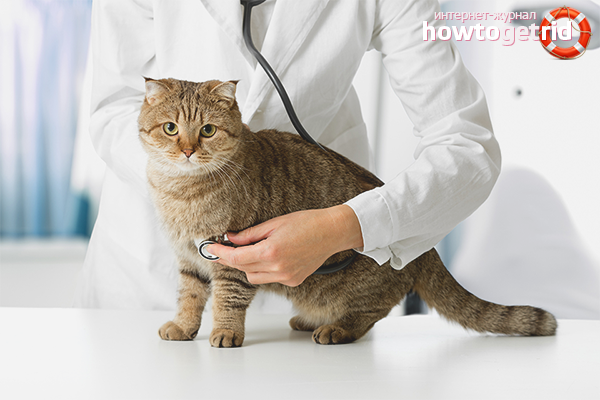




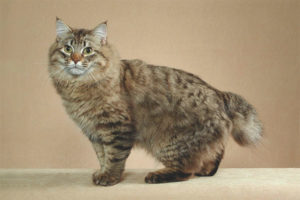
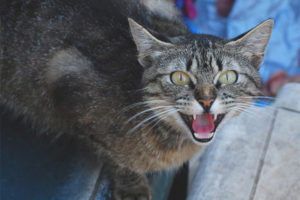
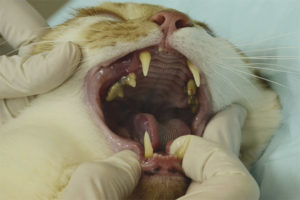
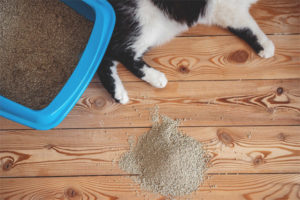
Submit